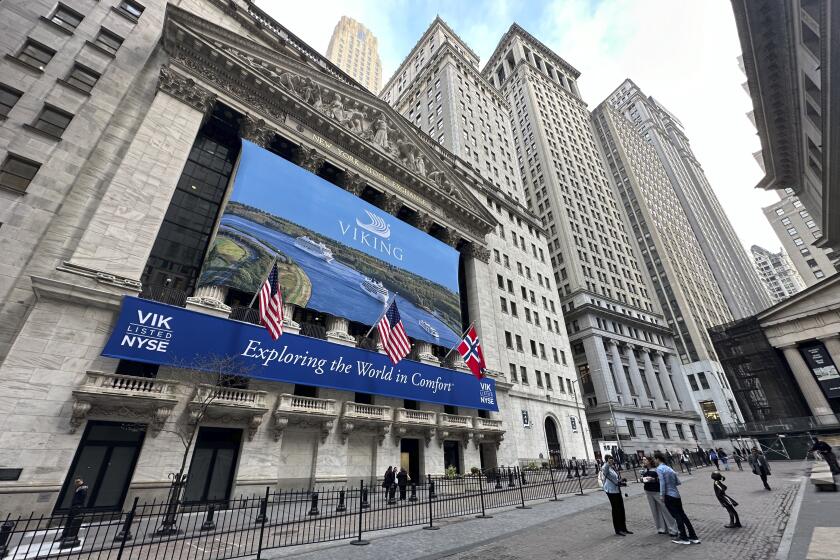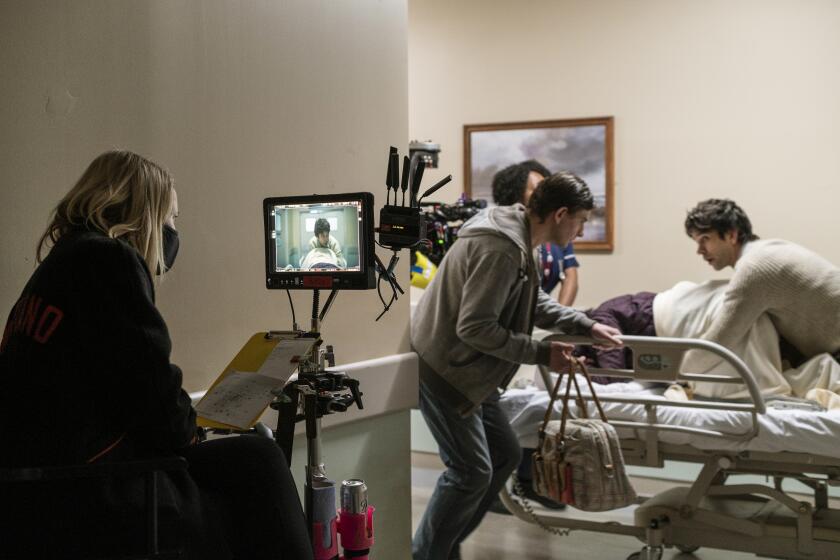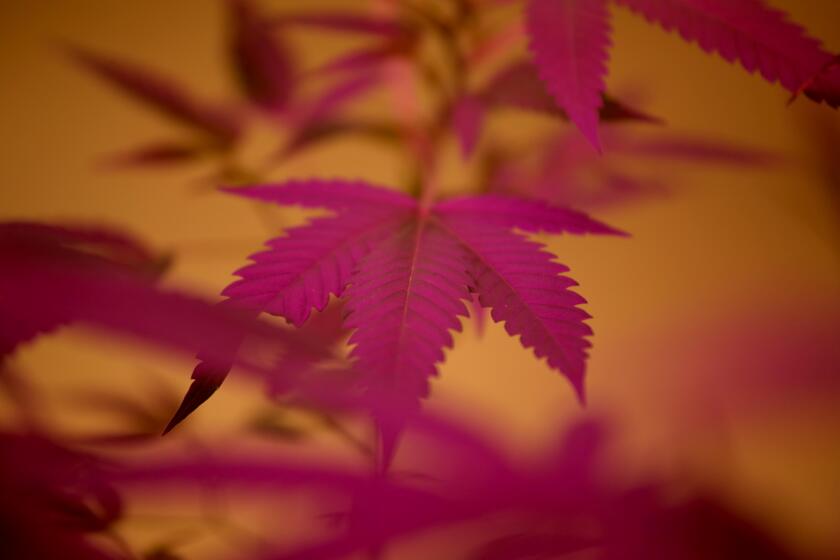Brewers Making a Push for State to Go ‘Dry’ : Anheuser-Busch Following Lead of Asahi of Japan With Its Lower-Sugar Beer
Already faced with a large choice of fermented beverages--ale, malt liquor, draft, lager, fire-brewed, cold-filtered, low alcohol and low calorie--Californians are now being courted by companies selling “dry beer.”
Japanese brewers took the lead by distributing the product, a beer with less sugar and little after-taste, to restaurants and stores in Asian-American communities in California.
Now Anheuser-Busch is unveiling a version called Michelob Dry, a product that will be heavily promoted in California. The St. Louis-based brewer plans to market and distribute the dry drink nationwide--a development that actually pleases distributors of the dry Japanese product.
Among those buoyed by the news of the Anheuser-Busch entry is Ken Kamejima, assistant general manager of the Los Angeles-based Asahi Breweries U.S.A. Kamejima said Anheuser-Busch, the leading U.S. brewer, will create new demand for all brands of dry beer when it launches an advertising campaign that will coincide with the national commercial debut of Michelob Dry on Nov. 7.
“Most Americans don’t know about dry beer,” Kamejima said. “Anheuser-Busch can make people aware and make a large market for dry beer.”
Asahi began to distribute Asahi Super Dry in the United States in June and had sales of about $400,000 in September, Kamejima said.
The beer is sold in California, New York and Hawaii--mainly in Japanese-American communities--but Asahi plans to expand distribution to other states in 1989, Kamejima said. As sold in the United States, Asahi Super Dry has an alcohol content of 3.9%.
Others Offered Versions
Asahi decided to distribute Super Dry in the United States after the product proved to be wildly successful in Japan. The Japanese beer market was reshaped after Asahi introduced dry brew in March, 1987. The company’s 1987 sales climbed 33%, boosting its market share in Japan to 13% from 10%.
After watching Asahi’s fortunes rise on the sales of dry beer, Japan’s other three major brewers--Kirin, Sapporo and Suntory--offered their own versions.
The Japanese dry beers, which have a higher alcohol content than U.S. brands, are the rage in Tokyo. The dry beer market now captures about 40% of all beer sales in Japan. All four of Japan’s major brewers sell dry beers in the United States, primarily in Asian-American establishments.
Anheuser-Busch had also eyed the dry revolution in Japan, said Robert J. Goughenour, director of the Michelob Brand Group. Anheuser decided that it had seen enough and took the plunge by gathering data and product testing.
“We did some research,” Goughenour recalled. “One thing we learned is that beer drinkers are looking for something new.”
Anheuser developed a new product and began in September to test-market the new beer in Fresno, Santa Barbara and four other U.S. cities. The beer, which has about the same alcohol content, less sugar and one fewer calorie than the low-calorie Michelob Light, has attracted light beer drinkers, Goughenour said.
The company had planned to market the beer to men in the 29- to 48-year-old range, but discovered that wine drinkers and women and men of all ages like the brew, according to Goughenour.
The positive test market data from the California cities was particularly important because a large segment of the beer market is influenced by trends, Goughenour said. The state accounts for as much as $5 billion of the $39-billion U.S. beer market, according to some industry estimates. Anheuser, the industry leader with about 40% of the U.S. market, will try to sell Californians on the notion of dry beer through newspaper ads and television and radio commercials, Goughenour said.
Anheuser will probably spend heavily to promote the beer in California, said Paul Gillette, publisher of the California Beverage Hotline.
“California is always a hot market, especially for beer,” Gillette said. “Every major beer trend that has broken nationally, has broken here first. . . . There may be a disaffection with bland beers. If so-called dry beers are perceived as having more oomph --more taste--they could get more market share. Anheuser-Busch wouldn’t get involved unless it’s likely to be successful. They’re very astute.”
Another industry observer--Roy Burry, an analyst with Kidder, Peabody & Co.--said Anheuser wants to be the first to distribute dry beer on a national level in the United States because the American pioneer is more likely to secure the lion’s share of the market.
G. Heileman Brewing Co., based in La Crosse, Wis., has sold a dry beer in Illinois and Wisconsin but has not distributed the product nationally.
“Anheuser-Busch wants to remain dominant in the (U.S.) beer industry,” Burry said. “To dominate a market, you can’t take a chance that another brewer will get a foothold in something that could be a big portion of the market. . . . Besides, the beer industry is very trendy, and Japanese beer has never been big in the U.S.”
However, Sapporo hopes to establish a sizable presence in the United States by making a mark in the fermented dry beverage market, according to Bob Avila, national sales and marketing manager for the Los Angeles-based Sapporo U.S.A. Sapporo must market its product--Sapporo Draft Dry--as a malt liquor in California because it has an alcohol content of 4.2%. Under state law, fermented beverages with more than 4% alcohol content are classified as malt liquor.
TOP 20 IMPORTED BEER BRANDS Imports to United States, in 31-gallon barrels
1987 1987 Percent Market Market Change Share, Share, BRAND 1987 ‘86-’87 Imports Total 1) Heineken 2,254,880 -14.0 24.1 1.20 2) Corona 1,705,645 74.1 18.2 0.91 3) Molson 988,900 -2.7 10.6 0.53 4) Becks 762,200 -2.0 8.1 0.41 5) Moosehead 464,520 0.0 5.0 0.25 6) Labatt 435,484 11.1 4.7 0.23 7) Amstel 281,322 14.0 3.0 0.15 8) Dos Equis 225,000 35.2 2.4 0.12 9) Foster’s 225,000 59.2 2.4 0.12 10) St. Pauli Girl 222,967 -28.0 2.4 0.12 11) Tecate 203,226 11.9 2.2 0.11 12) Guinness Stout 142,403 9.0 1.5 0.08 13) Old Vienna 97,064 2.0 1.0 0.05 14) Bass Ale 87,097 20.0 0.9 0.05 15) Sapporo 84,495 14.0 0.9 0.05 16) Tsingtao 83,468 21.1 0.9 0.04 17) Grolsch 78,329 14.0 0.8 0.04 18) Kirin 64,673 -1.5 0.7 0.03 19) Moussy 61,693 -5.8 0.7 0.03 20) DAB 51,613 0.0 0.6 0.03
Source: Brewery Age






